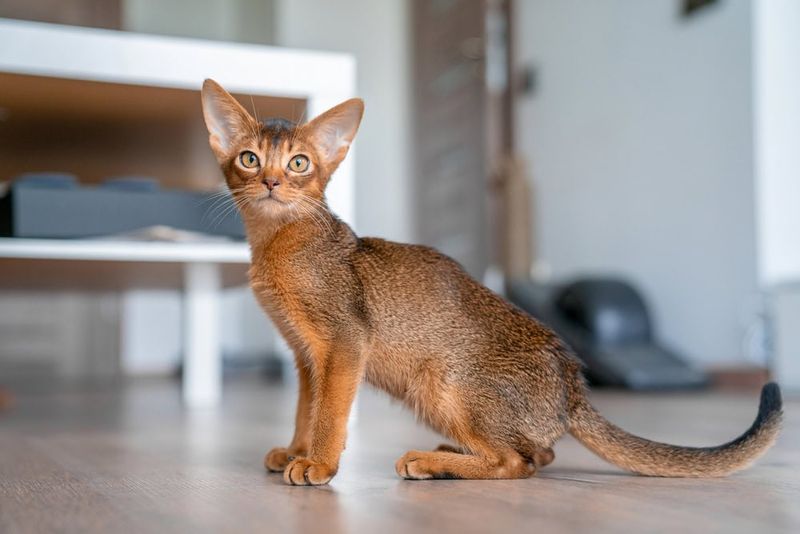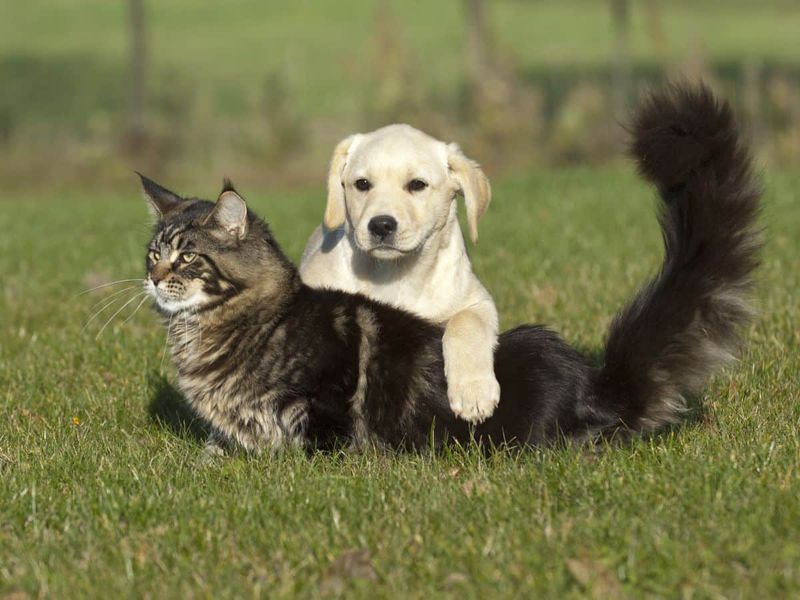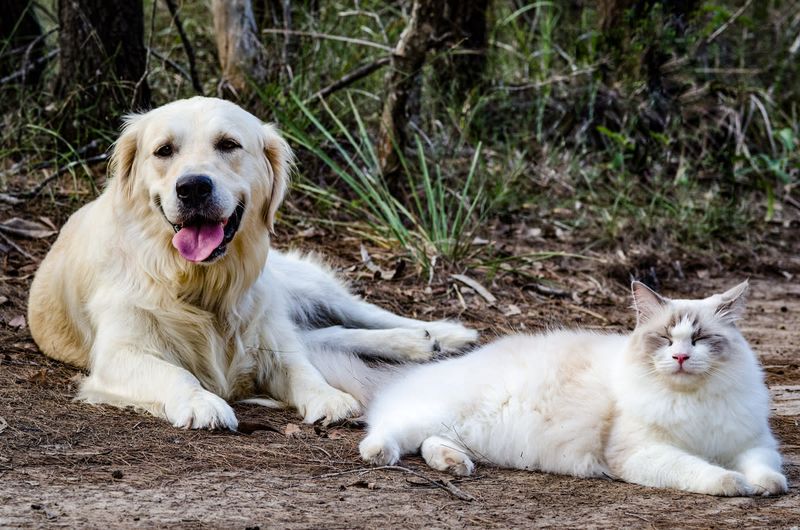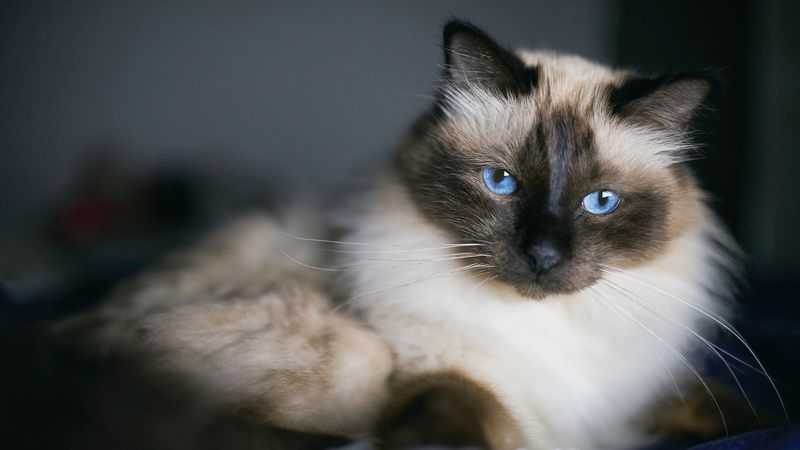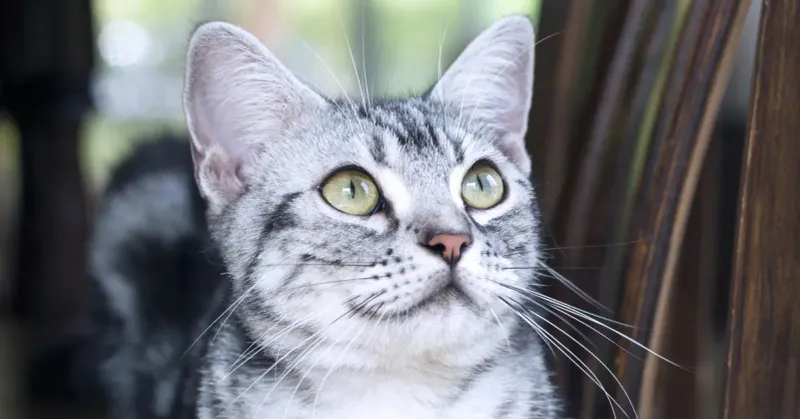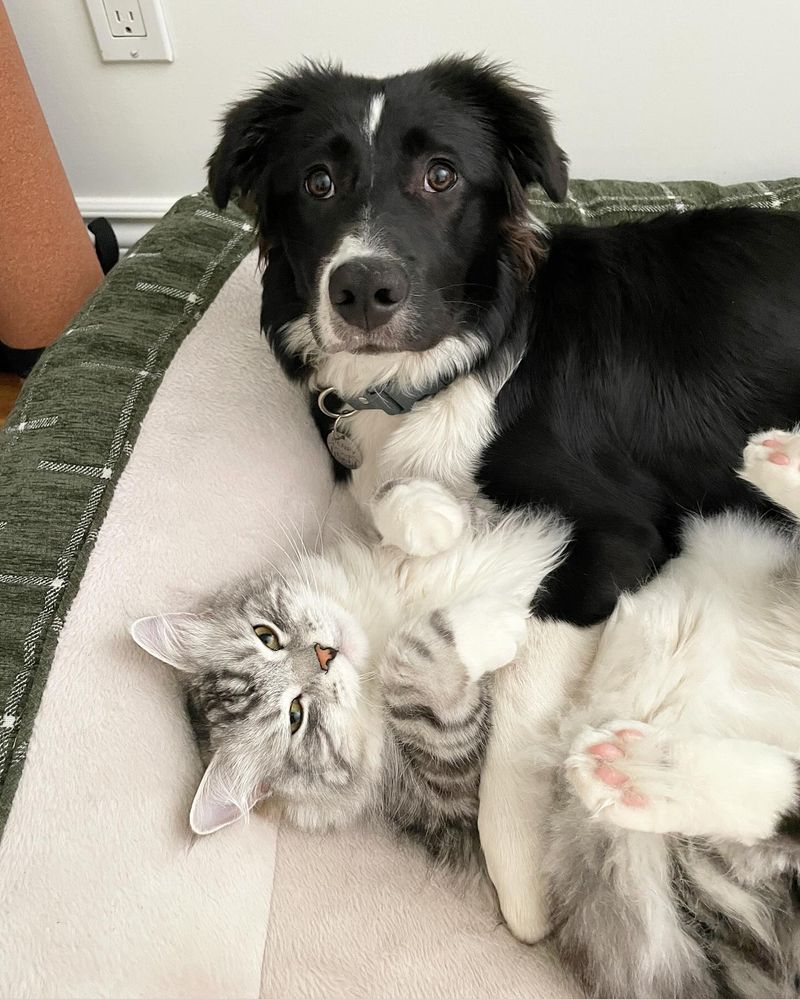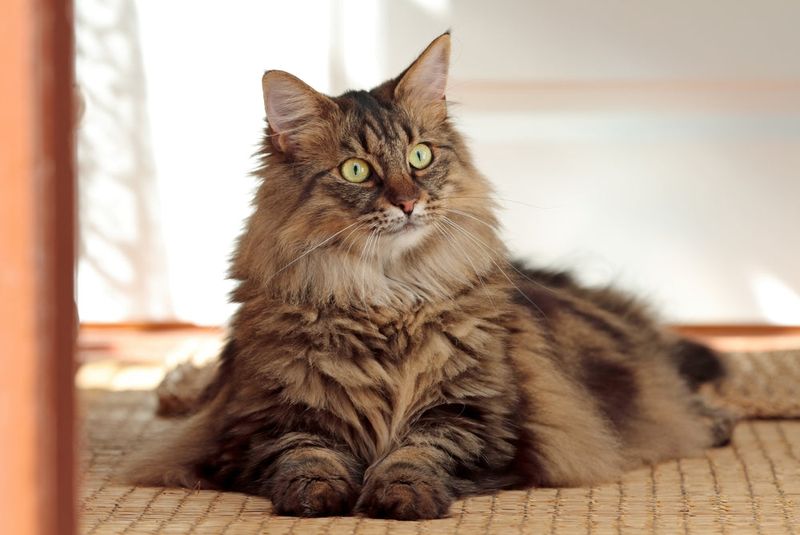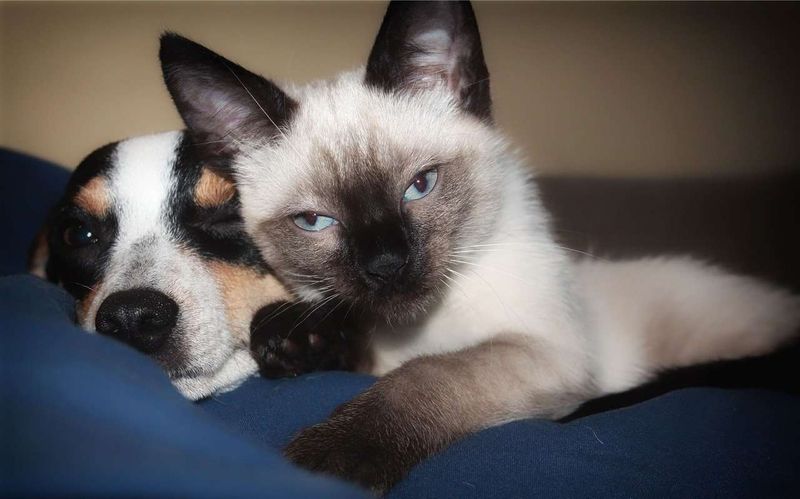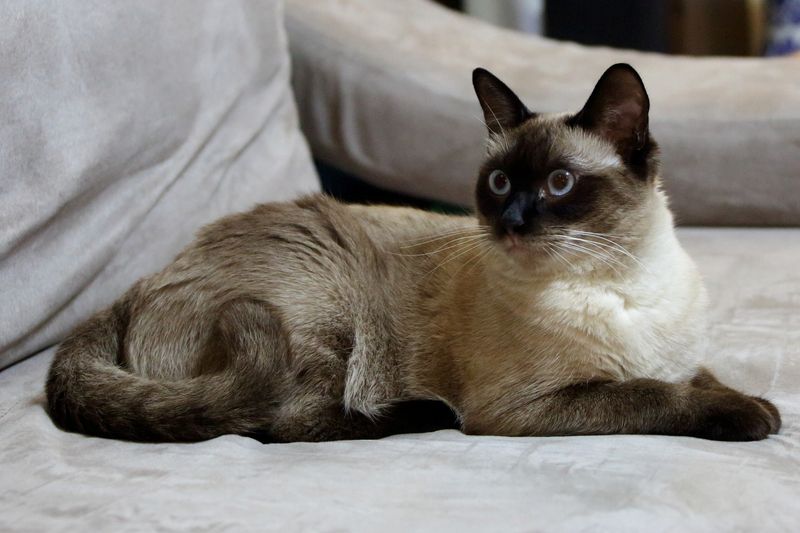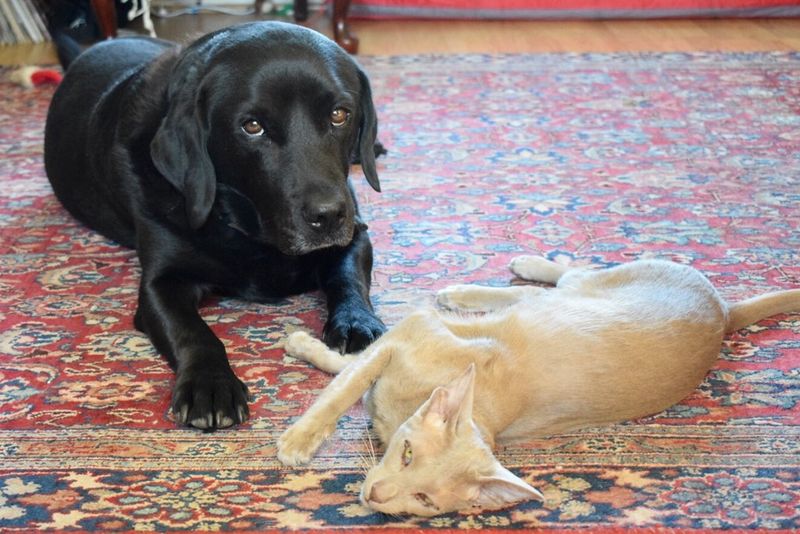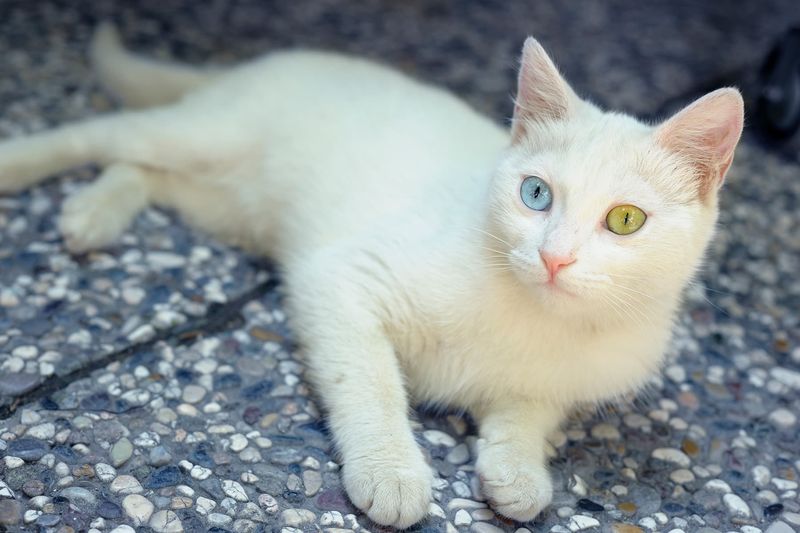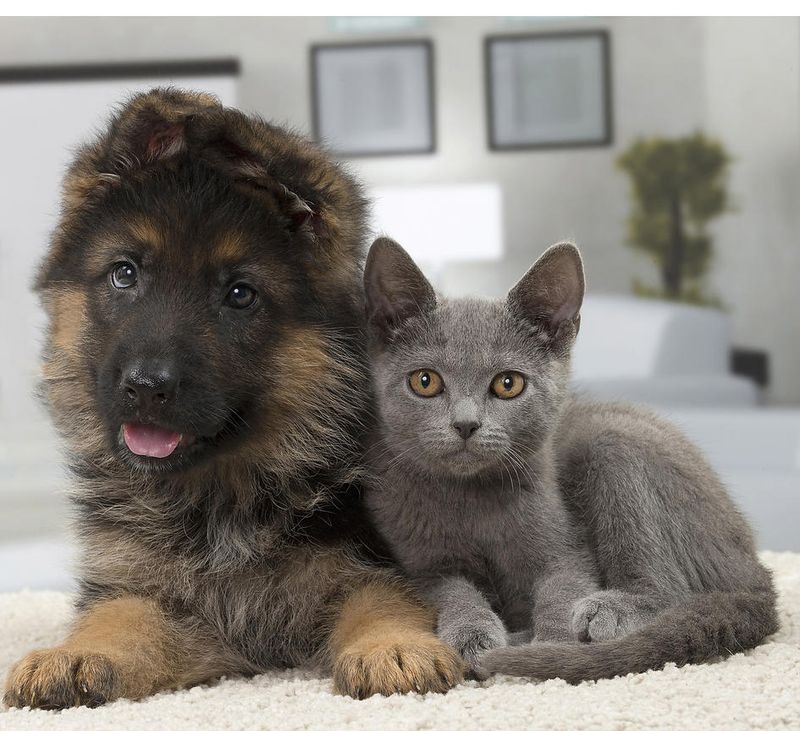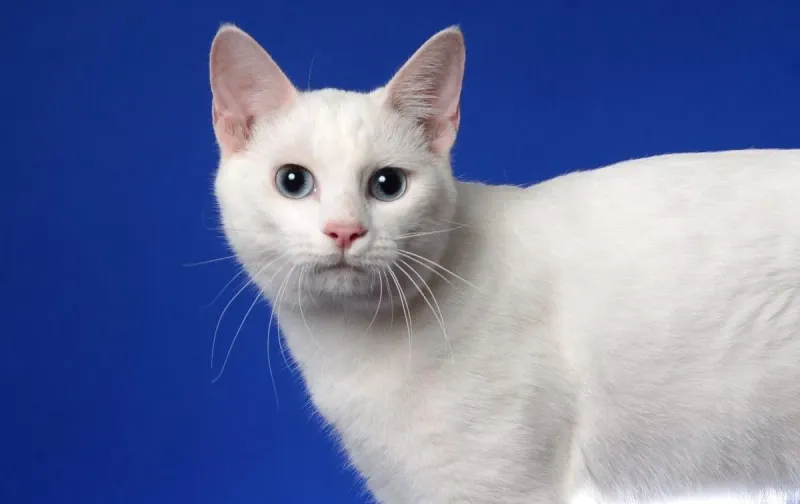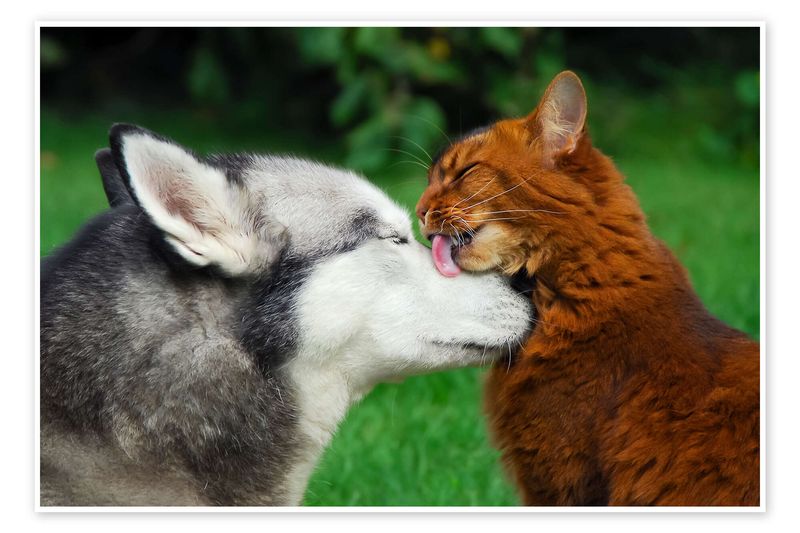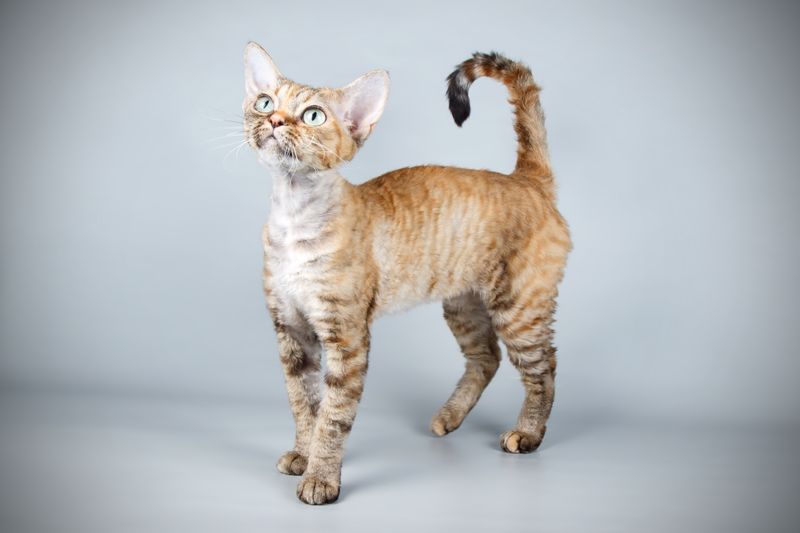📖 Table of Content:
The idea that one must choose between cats and dogs is more myth than reality. Many homes thrive with both species sharing space and affection. Harmony often depends on the right match in temperament and energy levels.
Some cat breeds are naturally more social, adaptable, and open to canine company. These felines are less territorial and more likely to enjoy play or quiet companionship with a dog. Their personalities help ease the transition in multi-pet households.
Choosing a cat breed known for dog-friendly behavior increases the chances of a peaceful, happy home. Compatibility doesn’t just happen—it’s often a result of the right pairing. Understanding which breeds tend to bond well with dogs can set the stage for a lifelong friendship.
1. Abyssinian
Abyssinians bring energy and playfulness that match a dog’s active lifestyle. Their curious and outgoing temperament makes them natural companions for canine friends rather than adversaries.
These athletic cats enjoy interactive play and can often be found racing around the house alongside their dog buddies. They’re not typically lap cats but form strong bonds with all family members—humans and pets alike.
Abyssinians adapt well to new situations, making introductions to dogs smoother than with more timid breeds. Their intelligence helps them understand boundaries and establish respectful relationships with dogs.
2. Maine Coon
Often called the gentle giants of the cat world, Maine Coons possess an easygoing demeanor that works wonderfully with dogs. Their laid-back attitude and patient nature prevent them from being easily rattled by a dog’s enthusiastic behavior.
Standing their ground rather than fleeing, these large cats typically command respect from dogs. The Maine Coon’s social personality means they genuinely enjoy company and often seek out their canine housemates for warmth and companionship.
Their dog-like traits—such as playing fetch, walking on leashes, and enjoying water—create natural common ground with dogs. This shared activity preference helps build lasting friendships between these pets.
3. Ragdoll
Known for going limp in a human’s arms, Ragdolls embody calm and trust. Their mellow personality makes them well-suited to living with dogs, as they tend to stay composed and non-confrontational. Most prefer peaceful coexistence over tension or conflict.
These affectionate cats form strong bonds with all family members and typically view dogs as just another friend. Their patient temperament means they tolerate a dog’s playful antics without becoming stressed or defensive.
Ragdolls prefer staying close to their people rather than climbing or hiding, making them more accessible to dogs. This ground-level lifestyle creates more opportunities for positive interactions and shared spaces with canine companions.
4. Birman
With their blend of curiosity and calmness, Birmans adapt smoothly to living alongside dogs. Rather than bolting at the first bark, they typically remain composed and unbothered. Their steady personality helps create harmony in mixed-species households.
These medium-sized cats communicate their boundaries clearly but kindly, which dogs seem to understand and respect. Their sociable nature means they actively seek companionship rather than solitude, making dogs potential playmates rather than threats.
Birmans adapt their energy levels to match their environment, capable of both spirited play sessions with active dogs and quiet cuddle times with more laid-back canines. This flexibility makes them versatile companions in homes with various dog personalities.
5. American Shorthair
American Shorthairs bring a working-class attitude to multi-pet households. Originally bred as mousers on farms and ships, they’re accustomed to environments where dogs and other animals are present.
These sturdy cats possess confidence without aggression, allowing them to establish respectful relationships with dogs. Their moderate activity level matches well with many dog breeds—energetic enough for play but not so hyperactive that they trigger a dog’s chase instinct.
American Shorthairs appreciate their independence but also enjoy social time, finding a balanced middle ground that works well in homes with canine companions. Their adaptable nature helps them adjust to a dog’s presence without stress or conflict.
6. Siberian
Originating from Russia’s unforgiving winters, Siberians developed both physical toughness and emotional resilience. Their bold nature means they typically meet dogs with interest instead of anxiety. These confident cats are well-equipped for harmonious, multi-pet homes.
Their playful nature persists well into adulthood, creating ongoing opportunities for shared activities with dogs. Siberians often engage in interactive play, sometimes even initiating games with their canine housemates.
Despite their impressive coat, Siberians are athletic and agile, able to hold their own in active households with dogs. They’re known for their problem-solving abilities, helping them navigate complex social dynamics in multi-pet homes with remarkable ease.
7. Norwegian Forest Cat
Descended from hardy northern stock, Norwegian Forest Cats meet dogs with a steady gaze and unshaken poise. Their refusal to retreat sends a clear message that they’re not to be chased.
Family-oriented by nature, Norwegian Forest Cats form strong bonds with all household members, including four-legged ones. They balance independence with sociability, enjoying both solo adventures and quality time with their canine companions.
Their rugged outdoor heritage makes them unfazed by the rough-and-tumble play style many dogs prefer. While not overly demanding of attention, these cats appreciate being included in family activities, creating natural opportunities for positive dog interactions.
8. Tonkinese
Blending the friendliness of Siamese and the calm of Burmese, Tonkinese cats are known for their cheerful, social personalities. They often match a dog’s energy level and enjoy interactive play. These confident cats are rarely intimidated by a wagging tail.
These cats crave companionship and actively seek out playmates, making dogs welcome additions to their social circle. Tonkinese typically greet visitors (human or animal) with enthusiasm rather than suspicion, setting a positive tone for dog interactions.
Highly intelligent, Tonkinese quickly learn household routines and boundaries, including how to navigate relationships with dogs. They remain playful throughout their lives, providing ongoing entertainment for themselves and their canine friends.
9. Burmese
With a deep need for social interaction, Burmese cats often see dogs as part of their extended family. Their outgoing and affectionate nature keeps them involved in daily household life. Hiding isn’t their style—they prefer being in the mix.
Athletic and coordinated, Burmese can match a dog’s playful energy without becoming overwhelmed. They maintain their kitten-like playfulness well into adulthood, creating ongoing opportunities for positive interactions with dogs.
Burmese possess a confident curiosity that helps them approach new situations—including meeting dogs—with optimism rather than fear. Their adaptable nature and desire for companionship make them excellent candidates for successful cat-dog friendships.
10. Oriental Shorthair
Oriental Shorthairs bring intelligence and adaptability to multi-pet households. These clever cats quickly assess new situations and individuals, including canine family members, adjusting their behavior accordingly.
Their athletic build and high energy level match well with active dogs who need playmates. Oriental Shorthairs form deep bonds with their families and often include dogs in their circle of trusted companions.
These cats communicate expressively through body language and vocalizations, helping dogs understand their intentions. While they appreciate quiet time, Oriental Shorthairs generally prefer company to solitude, making them more likely to seek out positive interactions with dogs rather than avoiding them.
11. Turkish Van
Known for their swimming skills, Turkish Vans bring a quirky, adventurous spirit that many dogs find intriguing. Their assertive personality prevents them from being pushed around in shared spaces. These cats are natural equals in dog-cat dynamics.
These cats develop slowly, reaching full maturity around 3-5 years of age, which gives them plenty of time to adjust to living with dogs. Their moderate activity level includes bursts of playful energy followed by relaxation periods, creating a rhythm that works well with many dog breeds.
Turkish Vans form strong bonds with their families but maintain an independent streak that helps them establish healthy boundaries with dogs. Their natural curiosity often leads to investigating what their dog friends are doing rather than hiding from them.
12. Chartreux
These soft-spoken felines are as calm as they are charming, making them ideal companions for dog-filled homes. Chartreux cats tend to observe rather than overreact, maintaining peace with quiet dignity.
French legends claim these cats took vows of silence in monasteries, and while that’s just a story, their genuinely quiet demeanor means they rarely provoke dogs with excessive vocalizations. Chartreux prefer using subtle body language and soft chirps to communicate, which many dogs find less threatening than loud meows.
Despite their reserved personality, these cats form deep bonds with family members of all species. Their patient, adaptable nature helps them adjust to sharing space with dogs without becoming stressed or territorial.
13. Japanese Bobtail
Japanese Bobtails bring centuries of cultural significance and good fortune to multi-pet households. Active and intelligent, these cats possess the confidence needed to establish positive relationships with dogs.
Their distinctive bobbed tails result from a natural genetic mutation and create a unique appearance that sets them apart. Japanese Bobtails enjoy interactive play and often initiate games that dogs can join, creating shared experiences that strengthen their bond.
These cats adapt well to new situations and typically approach unfamiliar dogs with curiosity rather than fear. Their sociable nature extends to all family members, making them more likely to view dogs as potential friends rather than threats to their territory.
14. Somali
Often called “fox cats” due to their bushy tails and wild appearance, Somalis bring playfulness and energy that match well with dogs. As the longhaired version of Abyssinians, they inherit the same outgoing, social nature that facilitates positive dog interactions.
These active cats enjoy climbing and exploring but also appreciate interactive play sessions that can include canine participants. Their intelligence helps them learn household rules quickly, including how to navigate relationships with dogs.
Somalis form strong bonds with their families and typically include all household members—human and animal—in their circle of trust. Their curious nature means they’re more likely to approach dogs with interest rather than running away in fear.
15. Devon Rex
Devon Rex cats bring a mischievous, elf-like charm to homes with dogs. Their wavy, short coat feels like warm suede and requires minimal grooming, reducing the likelihood of jealousy over grooming attention.
These playful cats remain kitten-like well into adulthood, matching a dog’s enthusiasm for games and activities. Devon Rex cats form extraordinarily strong bonds with their families and often follow their people (and pet siblings) from room to room, creating natural opportunities for positive dog interactions.
Their social nature means they genuinely enjoy company rather than merely tolerating it. Devon Rex cats typically approach new dogs with curiosity and playfulness rather than fear or aggression, setting the stage for friendship.

